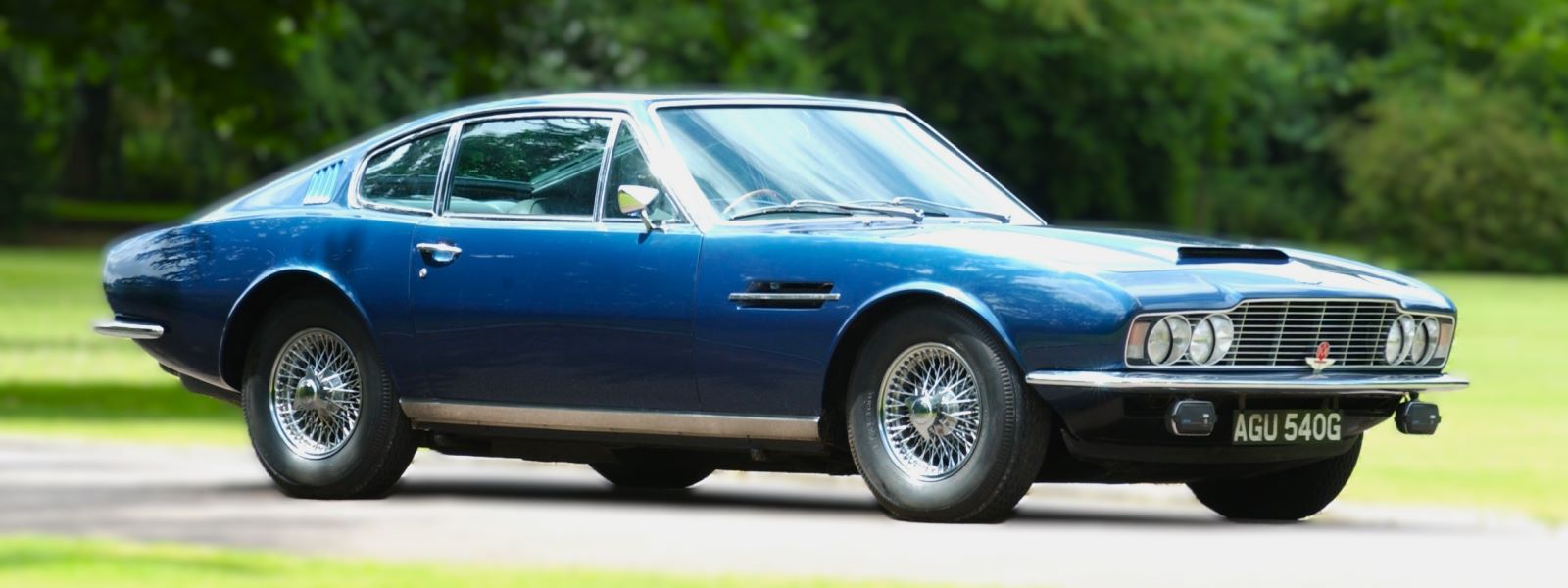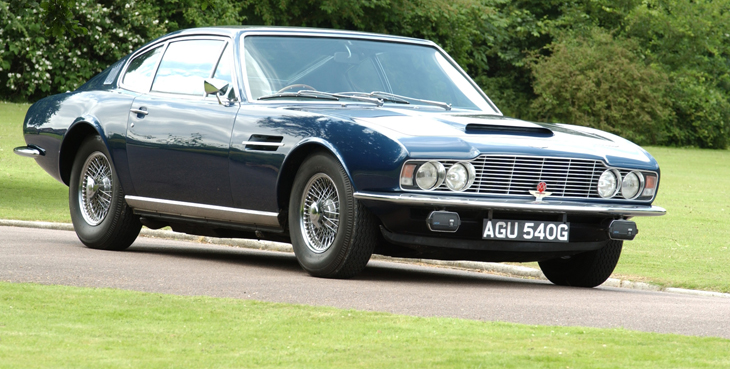
Aston Martin DBS
- Production Dates: October 1967 – May 1972
Unveiled at Blenheim Palace on September 25, 1967, the William Towns designed DBS was originally only intended for limited production.
In its original guise the DBS retained the six-cylinder, 3,995 cc engine employed in the DB6. However, after an announcement on 27 September, 1969 the DBS was also made available with a V8 engine, with the car being known as the DBSV8 – a four-seat grand touring car, capable of 160 mph.
Besides the engine differences, notable visual differences between the two variants included, on the DBSV8, the use of specially designed 15” light weight alloy wheels with ventilated brake discs for the first time on an Aston Martin production car (as opposed to the distinctive wire wheels employed on the DBS).
A distinguishing feature of both the DBS and DBSV8 are the four quartz iodine headlights set into an alternative version of the iconic Aston Martin grille.
The DBS and the DBSV8 were produced concurrently until May 1972.
DBS
- Engine: Six cylinder, 3995cc
- Power: 282 bhp @ 5,500 rpm
- Top speed: 140 mph
- 0-60mph: 7.1 seconds
- DBSV8 (in production from April 1970 – May 1972):
- Engine: V8, 5340cc
- Power: 320bhp @ 5,000 rpm
- Top speed: 160 mph
- 0-60mph: 6.0 seconds
- Transmission: ZF five-speed manual gearbox or Borg Warner automatic transmission. Limited slip differential.
- Final drive ratio: 3.73:1 (manual) or 3:54:1 (automatic)
- Length: 458 cm
- Height: 133cm
- Width: 183 cm
- Wheelbase: 261 cm
- Kerb weight: 1,588 kg (1,727 kg for DBSV8)
- Price at launch: £4,473 (1967 – DBS) and £5,281 (1969 – DBSV8)
In 1966, Touring of Milan had been commissioned to design the DB6 replacement. Two striking prototypes were produced before the design house went out of business. William Towns was then hastily brought in to design the new car, which was unveiled at Blenheim Palace on September 25, 1967, and initially only intended for limited production. DBS was intended to replace DB6, but production of the latter did not stop until 1970.
In its original guise DBS retained the six-cylinder, 3,995 cc engine, available in Standard or Vantage form as used in DB6. The original plan had been to use an all new V8 engine, but this was not ready in time.
The clean, modern lines of the new DBS found favour with many owners who required more interior space, and the car was a full four seater. The adoption of a De Dion rear axle was a departure from previous models and the striking grille design was still unmistakably Aston Martin.
In order to counter the increased weight of DBS, the Vantage version boasted revised camshafts to boost performance. In April 1972, a revised DBS was introduced with two headlamps rather than four. Simply called the AM Vantage, 70 examples of this model were produced.
The second Aston Martin to star in the James Bond film series, a DBS had a starring role in the 1969 George Lazenby movie ‘On Her Majesty’s Secret Service’. This was a one-off Bond appearance for both actor and car; it would be another 18 years before 007 would drive an Aston Martin again.

DBS V8
After an announcement on 27 September, 1969, DBS was made available with the long awaited V8 engine, with the car being known as DBSV8 – a four-seat grand touring car, capable of 160 mph. As with the straight six, the design of the new V8 engine was the work of Tadek Marek.
With a capacity of 5340cc and 4 overhead camshafts with Bosch mechanical fuel injection, DBSV8 was the fastest 4 seater production car in the world at the time. This engine was to form the basis of all Aston Martin power plants for the next 20 years.
Apart from the change of engine, notable visual differences were the specially designed 15’’ GKN light alloy wheels (as opposed to the distinctive wire wheels employed on DBS), with ventilated brake discs for the first time on an Aston Martin production car. A Chrysler Toqueflite auto transmission was offered as an alternative to the ZF manual 5 speed unit. In common with the 6 cylinder DBS, DBSV8 was produced until May 1972.


You must be logged in to post a comment.